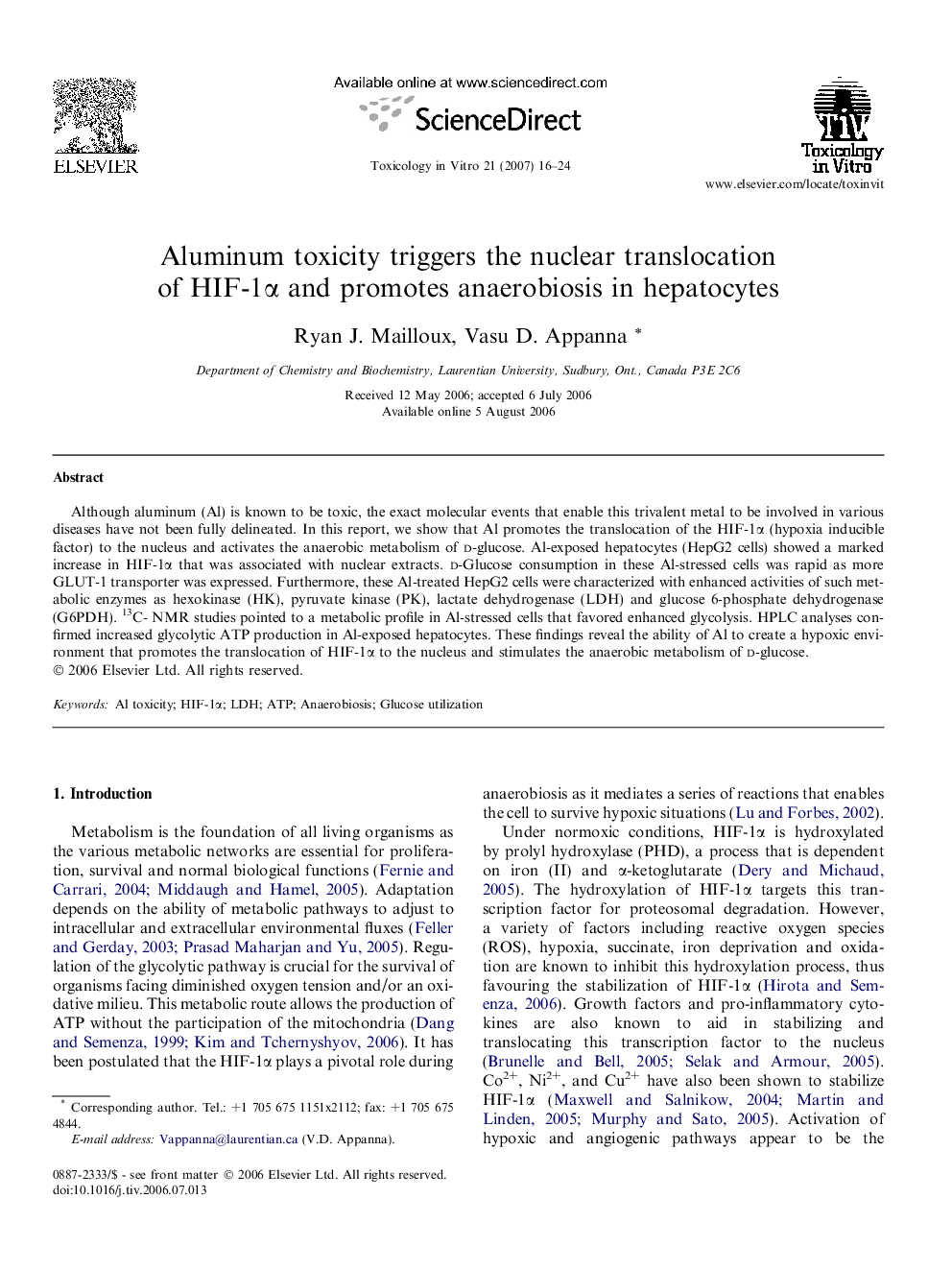| Article ID | Journal | Published Year | Pages | File Type |
|---|---|---|---|---|
| 2603922 | Toxicology in Vitro | 2007 | 9 Pages |
Although aluminum (Al) is known to be toxic, the exact molecular events that enable this trivalent metal to be involved in various diseases have not been fully delineated. In this report, we show that Al promotes the translocation of the HIF-1α (hypoxia inducible factor) to the nucleus and activates the anaerobic metabolism of D-glucose. Al-exposed hepatocytes (HepG2 cells) showed a marked increase in HIF-1α that was associated with nuclear extracts. D-Glucose consumption in these Al-stressed cells was rapid as more GLUT-1 transporter was expressed. Furthermore, these Al-treated HepG2 cells were characterized with enhanced activities of such metabolic enzymes as hexokinase (HK), pyruvate kinase (PK), lactate dehydrogenase (LDH) and glucose 6-phosphate dehydrogenase (G6PDH). 13C- NMR studies pointed to a metabolic profile in Al-stressed cells that favored enhanced glycolysis. HPLC analyses confirmed increased glycolytic ATP production in Al-exposed hepatocytes. These findings reveal the ability of Al to create a hypoxic environment that promotes the translocation of HIF-1α to the nucleus and stimulates the anaerobic metabolism of D-glucose.
